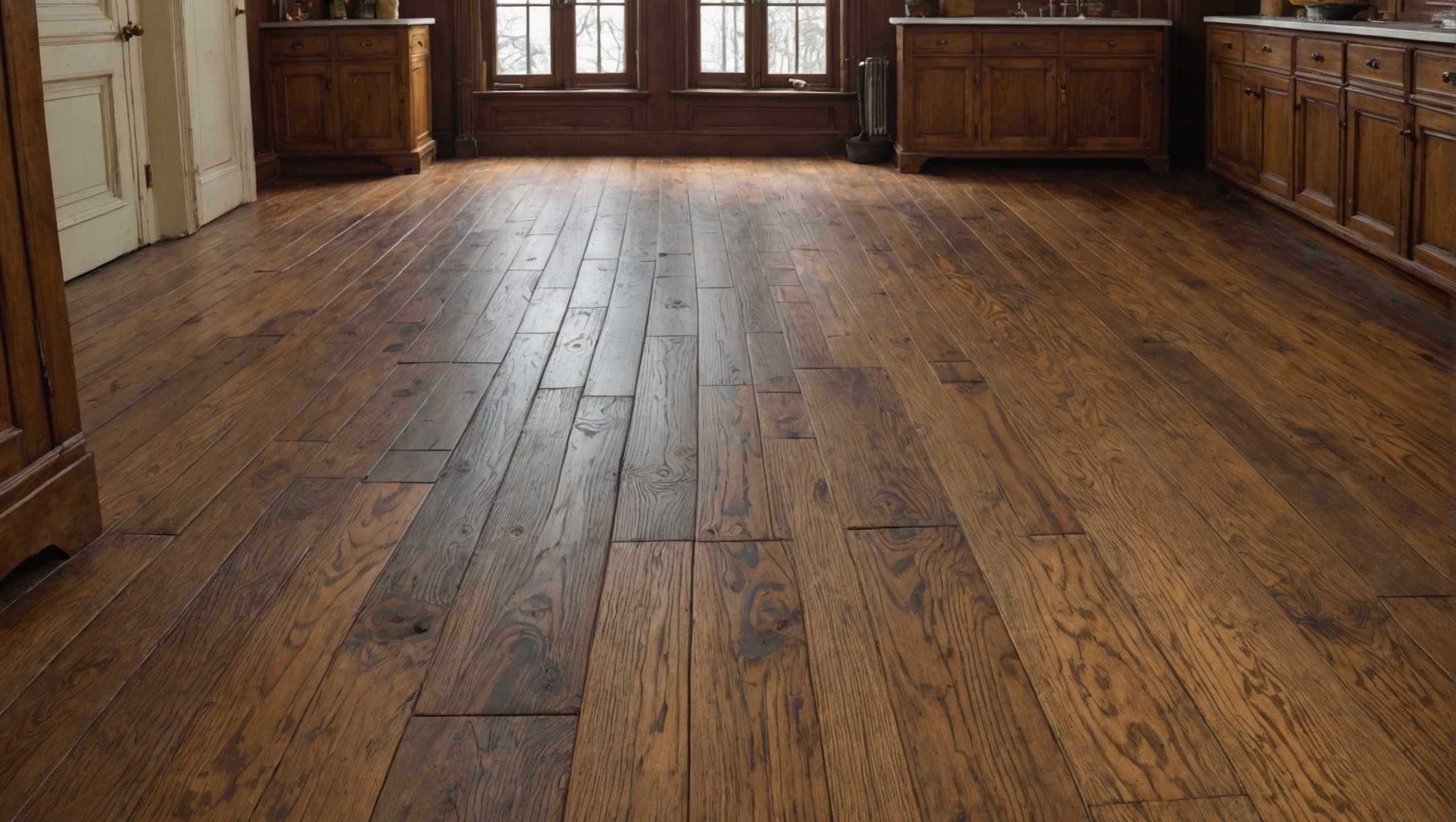Top DIY Remedies for Eliminating Creaky Wooden Floors in Victorian Houses
If you live in a charming Victorian house, you’re likely no stranger to the occasional creak and groan of your wooden floors. While these sounds can add to the nostalgic charm of an older home, they can also be frustrating and noisy. Here’s a comprehensive guide to help you eliminate those squeaky wooden floors using DIY remedies.
Understanding Why Your Floors Creak
Before diving into the solutions, it’s essential to understand why your wooden floors creak in the first place. Here are a few common reasons:
In the same genre : Top Urban Balcony Plants for an Effective and Stylish Privacy Screen
- Loose Boards: Over time, the nails or screws that hold the floorboards in place can become loose, causing the boards to shift and creak.
- Dry Subfloor: A dry subfloor can shrink, creating gaps between the floorboards and the subfloor, leading to creaks.
- Settling Joists: As a house settles, the floor joists can shift, causing the floorboards to creak.
- Moisture Changes: Changes in humidity can cause the wood to expand and contract, resulting in creaks.
Preparation is Key
Before you start fixing those squeaky floors, make sure you’re well-prepared. Here are some steps to take:
Clear the Area
Remove any furniture, carpet, or rugs from the area you plan to work on. This will give you clear access to the floorboards and allow you to identify the source of the creaks more easily.
Also to see : Top Compact Laundry Solutions Perfectly Crafted for Small Studio Apartments
Inspect the Floor
Walk around the room and identify where the creaks are coming from. Check for any loose boards, gaps between the boards, or signs of wear and tear.
Gather Materials
Here are some materials you might need:
- Silicone spray
- Talcum powder
- Powdered graphite
- Wood filler
- Screws and nails
- A hammer
- A screwdriver
- A drill (if necessary)
DIY Remedies to Fix Squeaky Floors
Lubricating the Floorboards
One of the simplest and most effective ways to reduce creaking is to lubricate the floorboards.
-
Silicone Spray: Spray silicone spray between the floorboards and the subfloor. This reduces friction and helps to silence the creaks.
“`plaintext -
Spray the silicone spray directly into the gaps between the floorboards.
-
Use a cloth to wipe away any excess spray that gets on the surface of the boards.
“` -
Talcum Powder: Another option is to use talcum powder. Sprinkle a small amount of talcum powder into the gaps and sweep it into the cracks.
“`plaintext -
Sprinkle talcum powder liberally into the gaps.
-
Use a broom or a brush to sweep the powder into the cracks.
“` -
Powdered Graphite: Powdered graphite is another effective lubricant that can be used to silence creaky floors.
“`plaintext -
Sprinkle powdered graphite into the gaps between the floorboards.
-
Use a cloth to wipe away any excess graphite from the surface.
“`
Tightening Loose Boards
Loose boards are a common cause of squeaky floors. Here’s how to fix them:
-
Check for Loose Nails or Screws: Inspect the floorboards for any loose nails or screws. Tighten them using a hammer or a screwdriver.
“`plaintext -
Use a hammer to tap loose nails back into place.
-
Use a screwdriver to tighten loose screws.
“` -
Add New Screws or Nails: If the existing nails or screws are too worn out, consider adding new ones.
“`plaintext -
Drill new screw holes if necessary.
-
Insert new screws or nails and tighten them securely.
“`
Filling Gaps with Wood Filler
Gaps between the floorboards can also cause creaking. Here’s how to fill them:
- Apply Wood Filler: Use a wood filler to fill the gaps between the floorboards.
“`plaintext - Apply the wood filler into the gaps using a putty knife.
- Let the filler dry completely before sanding it down to a smooth finish.
“`
Additional Tips for Long-Term Maintenance
To keep your wooden floors from becoming squeaky again, here are some long-term maintenance tips:
Regular Cleaning
Regular cleaning can help maintain the health and integrity of your wooden floors.
- Use Suitable Cleaners: Use cleaners specifically designed for wood floors to avoid damaging the finish.
“`plaintext - Avoid using excessive water, as it can seep into the wood and cause swelling or damage.
- Use a damp cloth to clean the floors, and dry them immediately to prevent water spots.
“`
Protecting the Finish
Protecting the finish of your wooden floors is crucial for their longevity.
- Apply a Protective Finish: Periodically reapply a protective finish to maintain the floor’s resilience against daily wear.
“`plaintext - Choose a finish that is suitable for your type of wood flooring.
- Follow the manufacturer’s instructions for application and drying times.
“`
Using Furniture Pads
Using furniture pads can help prevent scratches and indentations on your wooden floors.
- Place Pads Under Heavy Items: Place furniture pads under heavy items like sofas, beds, and tables.
“`plaintext - Choose pads that are specifically designed for wood floors.
- Replace the pads periodically to ensure they remain effective.
“`
Comparative Analysis of DIY Remedies
Here is a comparative analysis of the DIY remedies mentioned above:
| Remedy | Ease of Use | Effectiveness | Cost | Long-Term Solution |
|---|---|---|---|---|
| Silicone Spray | High | High | Low | Medium |
| Talcum Powder | High | Medium | Very Low | Low |
| Powdered Graphite | Medium | High | Medium | Medium |
| Tightening Loose Boards | Medium | High | Low | High |
| Wood Filler | Low | High | Medium | High |
Real-Life Examples and Anecdotes
The Case of the Creaky Staircase
One homeowner in a Victorian house noticed that their staircase was particularly squeaky. After inspecting the area, they found that several of the steps had loose boards. By tightening the screws and adding new ones where necessary, they were able to eliminate most of the creaks. However, they still had some minor creaks, which they silenced using silicone spray.
The Power of Regular Maintenance
Another homeowner found that regular cleaning and applying a protective finish periodically kept their wooden floors in excellent condition. They also used furniture pads under all heavy items, which prevented scratches and indentations. As a result, their floors remained squeak-free for years.
Final Words
Fixing squeaky wooden floors in Victorian houses is not only possible but also manageable with the right DIY remedies. By understanding the causes of the creaks, preparing the area properly, and using the right materials, you can silence those annoying squeaks and maintain the beauty and integrity of your wooden floors.
As one homeowner noted, “The key to keeping our wooden floors squeak-free is regular maintenance. It’s not just about fixing the creaks when they appear, but also about preventing them from happening in the first place.”
With these DIY remedies and tips, you can transform your creaky wooden floors into a silent and elegant feature of your home, enhancing both its aesthetic appeal and its functionality. So, take the first step today and say goodbye to those squeaky floors once and for all.






